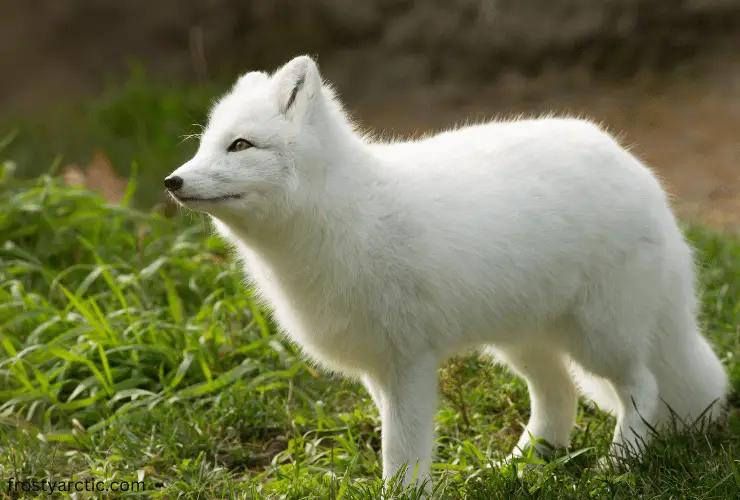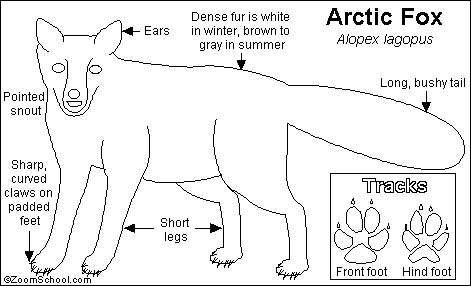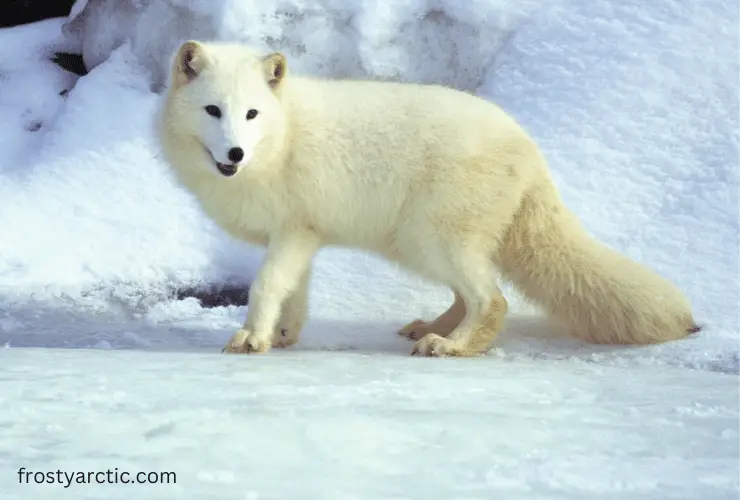An Arctic fox has well-developed behavioral adaptations to cope with extremely harsh weather. The Arctic fox digs itself a hole to hide from the snow. When the temperature is low, it curls into a ball, using its tail to cover its head and paws to reduce the surface-volume ratio.
Arctic foxes are another wonder of nature that has unfortunately been hunted for fur by predators in their native lands. Let’s uncover the intriguing behavioral adaptations of these fascinating animals.
What Adaptations Do Arctic Foxes Have to Survive?
Survival can be difficult in harsh weather conditions like the Arctic Tundra, but thanks to Arctic foxes’ biological adaptations, they can survive the cold without hibernating.

The thick fur coating keeps their body temperature at a 104°F. They use their tail as a blanket, wrapping it around their body to stay warm at night.
Their feet are covered in thick fur, similar to snow boots that muffle their footsteps, preventing them from attracting the attention of their prey.
The unique whitish color of their coats helps them blend in their environment, concealing them from predators such as golden eagles, wolves, and polar bears.
As mentioned above, they change the color of their coat as the season changes, which serves useful when hiding from predators.

What are The Behavioral Adaptations of An Arctic Fox?
Apart from biological adaptions, Arctic foxes also exhibit certain behavioral adaptations which help them survive. A common example is digging a hole in the snow to shield themselves from the wind.
In frigid temperatures, these animals curl up into balls to reduce the surface-volume ratio, which helps them stay warm by covering their paws and tail.
Research suggests that foxes increase movement during the summer compared to the winter. ~ Prestrud, 1989
Arctic Fox Adaptations to Their Environment
As their name suggests, Arctic foxes are well adapted to the frigid temperatures of the Arctic, the polar region in the Northern Hemisphere, specifically the alpine tundra.
Unlike other animals from the fox family, Arctic foxes tend to be much smaller, which helps them stay warm. These animals can reduce heat loss thanks to their compact body surface area. ~ WWF.org.uk
How Do Arctic Foxes Adapt to Their Environment?
During the winter season, their fur thickens, shielding them against the harsh temperatures of their habitat. Because of these adaptations, Arctic foxes can easily survive the cold, eliminating the need for hibernation.
Other morphological adaptations include increased fat during winter, which insulates and keeps them warm, helping these animals survive the cold. Fat storage increases from 7% to about 22% in winter.
They also feature a small, rounded body shape, small ears, and short legs, which help them adapt to their freezing environment. Their thick tail helps them balance, just like a cat.
Arctic Fox Adaptations in The Tundra
Arctic foxes are often faced with a scarce amount of food. This low amount of food combined with harsh weather makes it difficult for them to survive.
How does the arctic fox adapt to the tundra?
They dig a small den under the snow to keep warm to survive these extreme conditions. They might stay down there for about two weeks.
In this period, the fox slows down its metabolism and heart rate, reducing the need for food and helping it conserve energy. It is almost like hibernation but for a temporary period. ~ Kids National Geographic.
Arctic Fox Adaptations Hunting
When it comes to hunting, Arctic foxes have several tricks up their sleeves. For instance, they follow polar bears to feast on the remains of their kills.
Lemmings usually hide from predators in a complex network of tunnels beneath the snow. Arctic foxes use their hearing ability to listen to movements under the snow.
On hearing something moves, they jump several feet high and dive into the snow to capture their prey.
Other foxes stay near the water to take advantage of marine animals such as fish, seabirds, invertebrates, and seals.
Arctic foxes also benefit from their unique fur coat, which helps them blend in with their surroundings. It serves as a useful tactic when launching surprise attacks on their prey.
Arctic Fox Adaptations for Food
Basically, the Arctic fox is a carnivore that depends on smaller animals for survival. The animal is described as an opportunistic eater, meaning it eats whatever it may find.
Mammals such as squirrels, lemmings, ground, birds, eggs, and carrions are a common part of its diet.
During the winter season, when food is available in a meager supply, it eats the leftovers of wolves and polar bears. It may also feed on the feces of other animals.
In summer, the Arctic fox stores extra food in its den, covering it with rocks to preserve it for later. It may also dig a hole in the permafrost to preserve extra food. This acts as a freezer, a useful tactic to store scraps for later.
Did you know? The Arctic fox population is heavily dependent on the lemming population. As lemming numbers go up and down, so do arctic fox populations. ~ WWF, UK
FAQ:
What do You need to know about Fennec fox and arctic fox adaptations?
The fennec fox is best adapted to the hot environment, while the arctic fox boasts biological features appropriate for the cold environment.
What are 3 arctic fox adaptations?
The Arctic fox boasts short ears, furry paws, and a short muzzle, three biological environments that guard it against the cold.
A Basic Discussion: Arctic fox vs desert fox adaptations
Desert foxes are nocturnal creatures that sleep during the day and hunt at night. However, Arctic foxes are carnivores that hunt for lemmings and birds or fish.
Their diet and behavioral adaptions are very different because of their different environments.
Conclusion
The Arctic ice is melting much faster because of global warming. This has affected the lives of thousands of Arctic foxes.
Because of the melting snow, their fur coats no longer protect them against predators, and their food source decline restricts their survival.
I hope this article comprehensively clarifies biological, behavioral, and morphological adaptations.



2 thoughts on “How do Arctic Foxes Adapt to the Environment?”